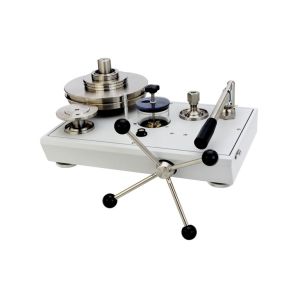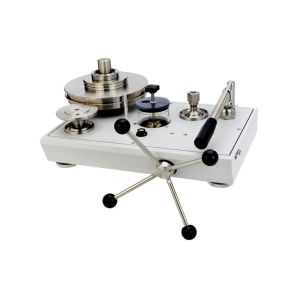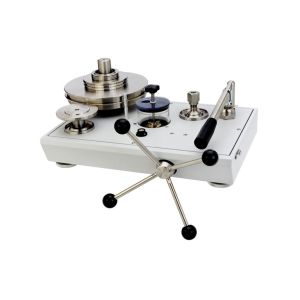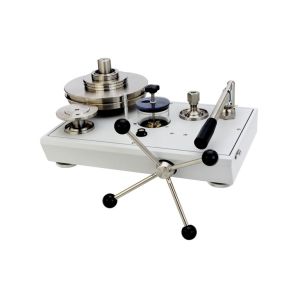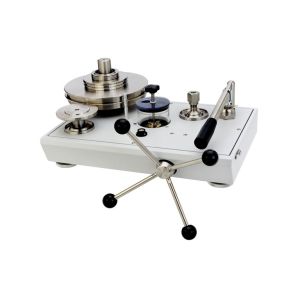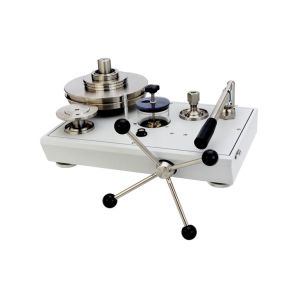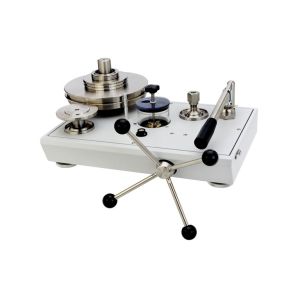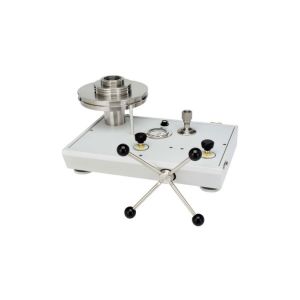Fluke Calibration 9118A-256
Fluke Calibration 9118A-256High performance furnace for thermocouple cals to 1200?CProduct Highlights Seven key features set the 9118A apart from other high-temperature calibration furnaces: 1. Wide temperature range spanning most high-temperature applications Standards and guidelines such as AMS 2750 and EURAMET cg-8 require that a thermocouple be calibrated over the full...
Fluke Calibration 9118A-256
High performance furnace for thermocouple cals to 1200?CProduct Highlights
Seven key features set the 9118A apart from other high-temperature calibration furnaces:
1. Wide temperature range spanning most high-temperature applications
Standards and guidelines such as AMS 2750 and EURAMET cg-8 require that a thermocouple be calibrated over the full temperature range in which it is used. The 9118A temperature range of 300 °C to 1200 °C covers most high-temperature applications.
2. Flexible configuration for calibrating a wide range of thermocouple types
The 9118A furnace can be operated with or without an isothermal block, which increases calibration workload that can be performed with a single furnace:
- Tube furnace configuration (without isothermal block): Base-metal thermocouples are often sheathed in formable materials such as braided fiberglass or PTFE. During calibration, they are bundled around a reference thermometer, held together with fiberglass cord or tape, and inserted into a tube furnace.
- Isothermal block configuration: Metal- or ceramic-sheathed thermocouples are generally constructed with noble-metal thermoelements and therefore have higher calibration accuracy requirements. The isothermal block, which accommodates up to four 6.35 millimeter probes, improves heat transfer and temperature stability. This better equalizes the temperature between the reference probe and the UUT, which lowers measurement uncertainty compared to calibration without a block.
The furnace configuration can be quickly changed by selecting the calibration parameters stored in the controller for the desired configuration and inserting or removing the alumina ceramic isothermal block.
3. Best-in-class temperature stability and uniformity for calibration accuracy
Axial and radial uniformity, as well as constant temperature stability over time, are key factors that contribute to accurate thermocouple calibrations.
To minimize axial temperature gradients, three actively controlled heater zones compensate for temperature differentials between the central zone and the front and rear zones. Type-S thermocouples, which are less susceptible to drift than other types, are used for zone control and cutout. Axial temperature uniformity when using the isothermal block is ± 0.2 °C over a 60 mm (2.4 in) zone from full immersion at 1200 °C.
Radial (hole-to-hole) uniformity is ± 0.25 °C at 1200 °C when using the isothermal block, and ± 0.5 °C over a 14 mm (0.6 in) diameter at the center of the furnace tube without a block.
When using the isothermal block, temperature stability is ± 0.1 °C or better over the full temperature range of the furnace.
No other calibration furnace in its class comes close to this level of performance for both modes of operation.
4. Automated setpoint control for improved lab productivity
A proprietary programmable controller, available in nine languages (English, Chinese, French, German, Japanese, Korean, Portuguese, Spanish, and Russian), enables technicians to automate setpoint temperature control for up to eight setpoint temperatures, the temperature ramp rate, and the time duration the furnace controls at each setpoint.
Automation and data collection can be further enhanced when the Fluke 1586A Super-DAQ is connected to the 9118A furnace through the RS-232 interface. The Super-DAQ can be programmed to control the furnace's setpoint temperatures and collect data for all sensors under test once the furnace has stabilized to within parameters defined by the user. After data has been collected at the first programmed temperature, the Super-DAQ will advance the furnace to the remaining programmed temperatures, collecting data at each setpoint. Once the test has been configured and started, the technician can walk away to work on other activities.
5. Non-metallic block helps minimize thermocouple contamination
Calibration furnaces with metallic blocks can contaminate thermocouples, causing their accuracy to drift over time. To minimize the risk of contamination, the furnace well and isothermal block of the 9118A are constructed of non-metallic, ceramic alumina. This eliminates the need to protect the thermocouples under test with costly ceramic sleeving—reducing cost of ownership.
6. Deep immersion depth to support most thermocouple calibrations
Industry standards such as AMS2750 recommend calibrating thermocouples at their normal working depth of insertion. The 9118A immersion depth is 365 mm (14.4 in) when using the isothermal block and 350 mm (13.8 in) to the central point of the furnace without a block. This immersion depth is adequate for most of thermocouple calibrations. The 40 mm x 700 mm (1.6 in x 27.6 in) open-ended furnace tube can also be useful when calibrating multi-junction thermocouples or when sample testing spools of thermocouple wire.
7. Dynamic heater control and cutouts for reliability and safety
The 9118A controls the heater power level below 100% to prevent the heater elements from overheating—improving heater reliability and lifetime. Redundant over-temperature cutouts are built into the 9118A to ensure safe operation of the furnace. These include over-temperature, chassis thermostat, fan fault, control thermocouple fault, and user programmable cutouts.
You can use this tab for adding shipping details, return policies and information or measurements etc.



